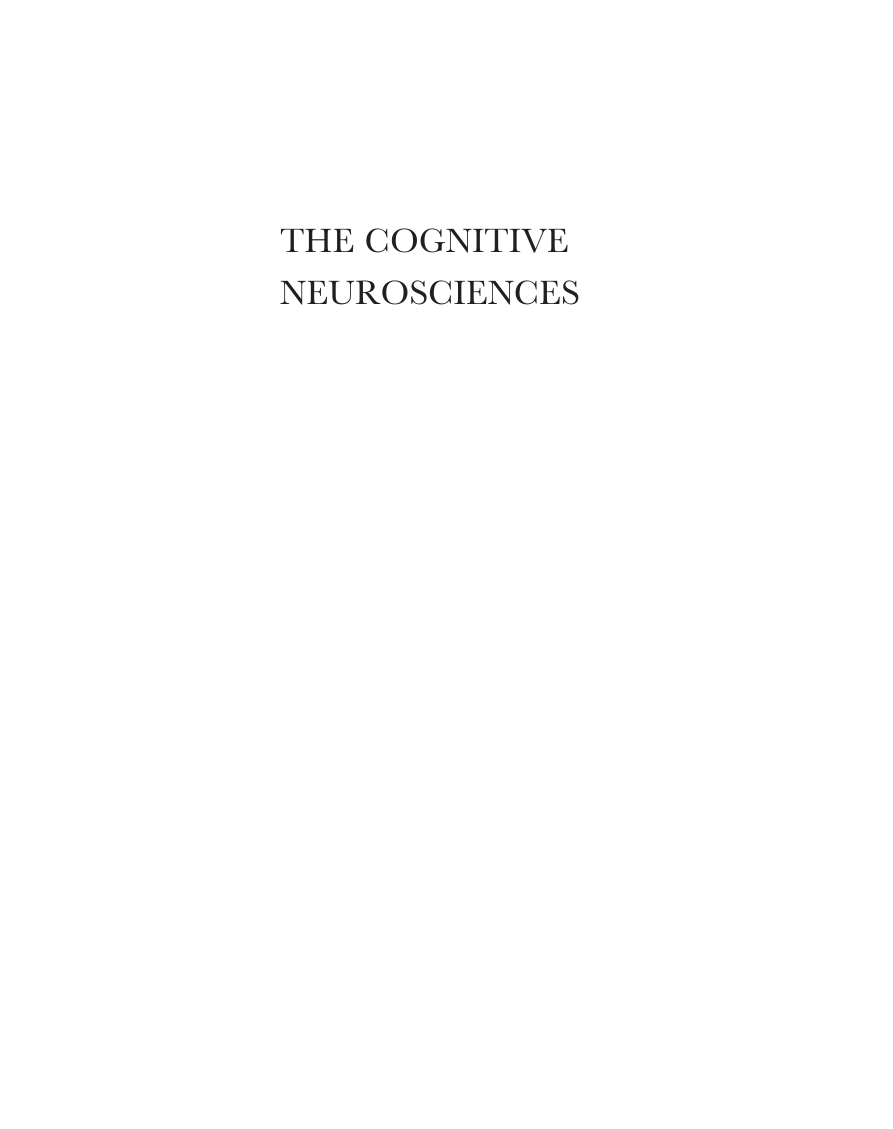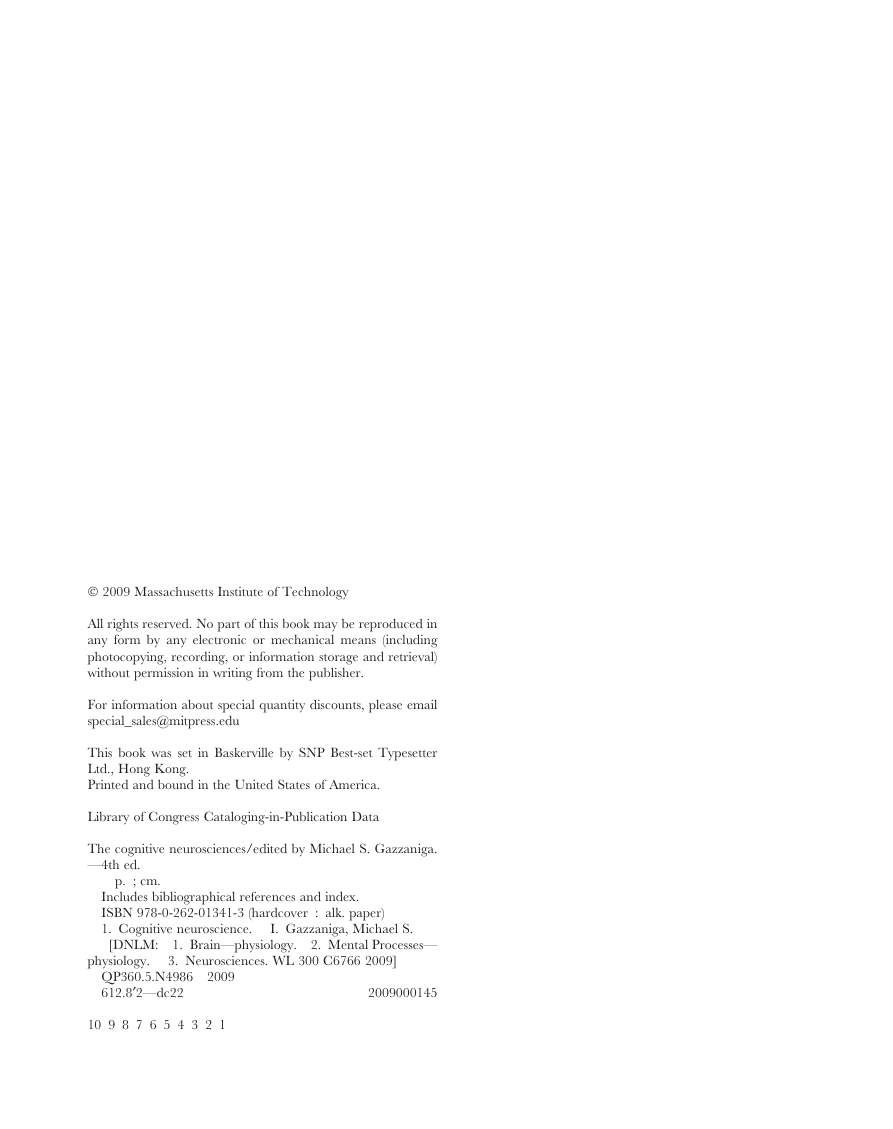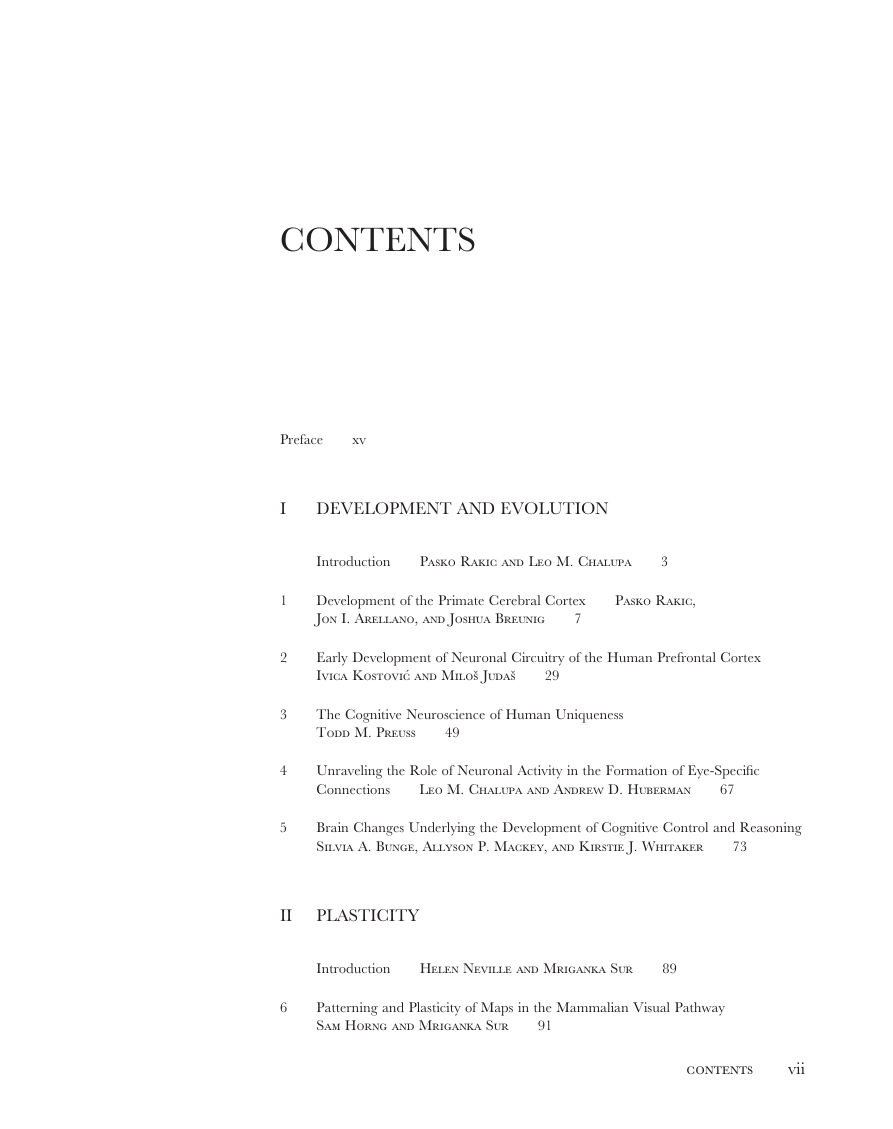Contents
Preface
I Development amd Evolution
Introduction
1 Development of the Primate Cerebral Cortex
2 Early Development of Neuronal Circuitry of the Human Prefrontal Cortex
3 The Cognitive Neuroscience of Human Uniqueness
4 Unraveling the Role of Neuronal Activity in the Formation of Eye-Specific Connections
5 Brain Changes Underlying the Development of Cognitive Control and Reasoning
II Plasticity
Introduction
6 Patterning and Plasticity of Maps in the Mammalian Visual Pathway
7 Synaptic Plasticity and Spatial Representations in the Hippocampus
8 Visual Cortical Plasticity and Perceptual Learning
9 Characterizing and Modulating Neuroplasticity of the Adult Human Brain
10 Exercising Your Brain
11 Profiles of Development and Plasticity in Human Neurocognition
III Attention
Introduction
12 Attention
13 Mechanisms of Selective Attention in the Human Visual System
14 The Frontoparietal Attention Network
15 Spatiotemporal Analysis of Visual Attention
16 Integration of Conflict Detection and Attentional Control Mechanisms
17 A Right Perisylvian Neural Network for Human Spatial Orienting
18 Spatial Deficits and Selective Attention
19 The Effect of Attentionon the Responses of Individual Visual Neurons
20 Selective Attention Through Selective Neuronal Synchronization
IV Sensation and Perception
Introduction
21 Grandmother Cells, Symmetry, and Invariance
22 Olfaction
23 Auditory Masking with Complex Stimuli
24 Insights into Human Auditory Processing Gained from Perceptual Learning
25 Auditory Object Analysis
26 The Cone Photoreceptor Mosaic in Normal and Defective Color Vision
27 Bayesian Approaches to Color Vision
28 Wiring of Receptive Fields and Functional Maps in Primary Visual Cortex
29 Encoding and Decoding with Neural Populations in the Primate Cortex
30 Perceptual Filling-in
31 Neural Transformation of Object Information by Ventral Pathway Visual Cortex
32 The Cognitive and Neural Development of Face Recognition in Humans
33 Roles of Visual Area MT in Depth Perception
34 Multisensory Integration for Heading Perception in Macaque Visual Cortex
35 Visual Stability during Saccadic Eye Movements
36 Optimal Estimation in Sensory Systems
V Motor Systems
Introduction
37 Neurobiology of Coordinate Transformations
38 Basal Ganglia and Cerebellar Circuits with the Cerebral Cortex
39 The Basal Ganglia and Cognition
40 Computational Neuroanatomy of Voluntary Motor Control
41 Forward Models and State Estimation in Posterior Parietal Cortex
42 Parallels between Sensory and Motor Information Processing
43 The Mirror Neuron System
44 Relative Hierarchies and the Representation of Action
VI Memory
Introduction
45 Comparative Analysis of the Cortical Afferents, Intrinsic Projections, and Interconnections of the Parahippocampal Region in Monkeys and Rats
46 Medial Temporal Lobe Function and Human Memory
47 Reconsolidation
48 The Dynamic Interplay between Cognitive Control and Memory
49 Phases of Influence
50 Individual Differences in the Engagement of the Cortex during an Episodic Memory Task
51 Constructive Memory and the Simulation of Future Events
VII Language
Introduction
52 The Cortical Organization of Phonological Processing
53 Morphological Processes in Language Production
54 Ventral and Dorsal Contributions to Word Reading
55 The Neural Basis of Syntactic Processing
56 Semantic Unification
57 Early Language Acquisition
58 Genetics of Language
59 The Biology and Evolution of Language
VIII The Emotional and Social Brain
Introduction
60 Ontogeny of Infant Fear Learning and the Amygdala
61 Emotional Reaction and Action
62 Interactions of Emotion and Attention in Perception
63 Context Effects and the Amygdala
64 Neurogenetic Studies of Variability in Human Emotion
65 Components of a Social Brain
66 The Neural Basis of Emotion Regulation
67 Sharing the Emotions of Others
68 The Cognitive Neuroscience of Moral Judgment
IX Higher Cognitive Functions
Introduction
69 Prefrontal Substrate of Human Relational Reasoning
70 Decision Making and Prefrontal Executive Function
71 Circuits in Mind
72 Semantic Cognition
73 Two Views of Brain Function
74 The Neuroeconomics of Simple Goal-Directed Choice (Circa 2008)
75 Neuroeconomics and the Study of Valuation
76 Emotion and Decision Making
X Consciousness
Introduction
77 Comparing the Major Theories of Consciousness
78 Recovery of Consciousness after Brain Injury
79 The Neurobiology of Consciousness
80 Visual Awareness
81 The Role of Feedback in Visual Attention and Awareness
82 Emotion and Consciousness
83 Volition and the Function of Consciousness
84 Toward a Theory of Consciousness
XI Perspectives
85 Mapping Cognitive Neuroscience
86 Reflections on the Cognitive Neuroscience of Language
87 Why the Imagery Debate Won’t Go Away
88 Looking Toward the Future
89 The Landscape of Cognitive Neuroscience
Contributors
Index
















 2023年江西萍乡中考道德与法治真题及答案.doc
2023年江西萍乡中考道德与法治真题及答案.doc 2012年重庆南川中考生物真题及答案.doc
2012年重庆南川中考生物真题及答案.doc 2013年江西师范大学地理学综合及文艺理论基础考研真题.doc
2013年江西师范大学地理学综合及文艺理论基础考研真题.doc 2020年四川甘孜小升初语文真题及答案I卷.doc
2020年四川甘孜小升初语文真题及答案I卷.doc 2020年注册岩土工程师专业基础考试真题及答案.doc
2020年注册岩土工程师专业基础考试真题及答案.doc 2023-2024学年福建省厦门市九年级上学期数学月考试题及答案.doc
2023-2024学年福建省厦门市九年级上学期数学月考试题及答案.doc 2021-2022学年辽宁省沈阳市大东区九年级上学期语文期末试题及答案.doc
2021-2022学年辽宁省沈阳市大东区九年级上学期语文期末试题及答案.doc 2022-2023学年北京东城区初三第一学期物理期末试卷及答案.doc
2022-2023学年北京东城区初三第一学期物理期末试卷及答案.doc 2018上半年江西教师资格初中地理学科知识与教学能力真题及答案.doc
2018上半年江西教师资格初中地理学科知识与教学能力真题及答案.doc 2012年河北国家公务员申论考试真题及答案-省级.doc
2012年河北国家公务员申论考试真题及答案-省级.doc 2020-2021学年江苏省扬州市江都区邵樊片九年级上学期数学第一次质量检测试题及答案.doc
2020-2021学年江苏省扬州市江都区邵樊片九年级上学期数学第一次质量检测试题及答案.doc 2022下半年黑龙江教师资格证中学综合素质真题及答案.doc
2022下半年黑龙江教师资格证中学综合素质真题及答案.doc